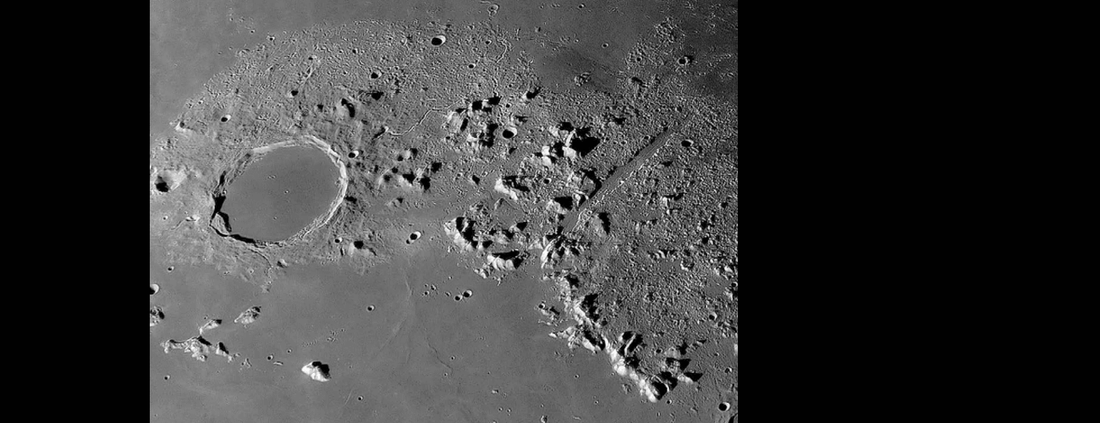The floor of the crater Plato on the Moon is a mysterious and captivating sight. At first glance, it appears as flat as an ice rink, defying our expectations of what we should see on the lunar surface. The floor is also intriguing because it appears to be much higher than the floors of other craters of similar size. This is further emphasized by the fact that the floor appears to be nearly the same elevation as the basalt fields in Mare Imbrium to the south, but the lava flows in Imbrium have not breached Plato's walls. This leads us to the conclusion that the lavas that flooded Plato welled up from below the crater.
Despite its seemingly featureless appearance, the floor of Plato is far from it. Numerous tiny craterlets dot the surface, and the larger ones can be used to test the quality of the telescopic seeing conditions. If four small central craterlets are easily seen, the seeing is considered good, and if even more are noticeable, the seeing is considered extraordinary.
One of the most interesting features of Plato is the curious hook-shaped shadows that extend from its eastern rim across the interior floor when the Moon is tilted just right. This effect is created by the shadow falling on an uneven surface.
Though Plato is not one of the largest landmarks on the Moon, it has a unique blend of science and strangeness that sets it apart and holds a special place in the hearts of lunar observers. Its strange, almost featureless floor and mysterious origins, combined with its scientific significance, make Plato an endlessly fascinating target for amateur and professional astronomers alike.





